The Truth About Getting A Colonoscopy
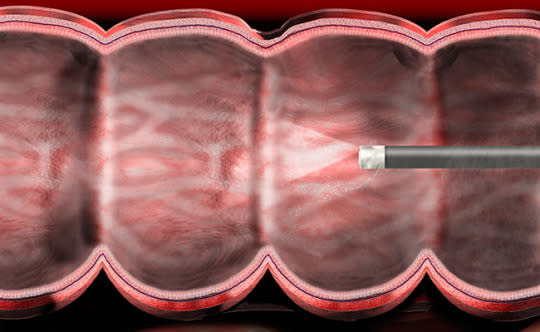
(Photo: Getty Images)
There are a lot of good things about turning 50. You’re more self-aware and more confident. You no longer sweat the small stuff. And if you took care of yourself in the decades prior to hitting the half-century mark, you’re probably in pretty good shape. On the 50-really-stinks side of things: it’s time to schedule a colonoscopy. That involves letting a doctor insert a flexible tube up your bum to check for polyps that could lead to colorectal cancer, the second-leading cause of cancer death.
As a health reporter, I’ve written about the life-saving benefits of colonoscopy for ages. Yet I put off my own procedure for 2 years. I told myself I didn’t have the time (even as I told others to make the time). The truth was I dreaded the necessary bowel cleansing, aka “the prep.” (Are your insides out of whack? Then try The Good Gut Diet.)
After being read a modified riot act by my primary care doctor (I was compliant with everything else except this screen), I finally made the appointment. Then I cancelled it. Then I made it again. And I eventually went through with it. (Here are tips to get over your colonoscopy fears.)
Guess what? There are far things worse than the bowel cleansing. Think an infestation of termites, identity theft or, of course, colon cancer—which, if you have a colonoscopy, could be discovered and treated early.
If you’re shying away from having the screening, it’s probably because you still don’t feel like you know what you’re signing up for. I’m here to enlighten you.
You can eat cake.
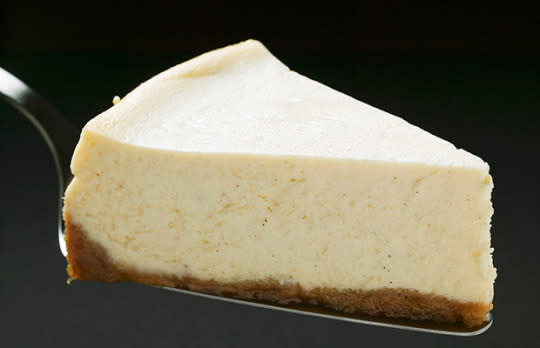
(Photo: Getty Images)
Very rarely will a doctor tell you to shun salads and whole grains. But for a few days leading up to your exam, it’s low-fiber, all the way. You get to eat cake, croissants, white bread, butter, pasta, and meat without the gristle. No popcorn, nuts, seeds. No whole-wheat toast! The rationale is simple: Low-fiber foods move through your digestive tract quickly, making the prep easier.
“Let’s put it this way: we don’t want to find corn kernels or lentils in your colon when we do the screen,” says gastroenterologist Carol Burke, MD of the Cleveland Clinic, adding that these tough-to-digest foods can also clog the scope. “Basically, we want the cleanest colon possible, and eating low-fiber, low-residue, easily-digestible foods will help you achieve that,” she says.
Clear liquids are your friend.
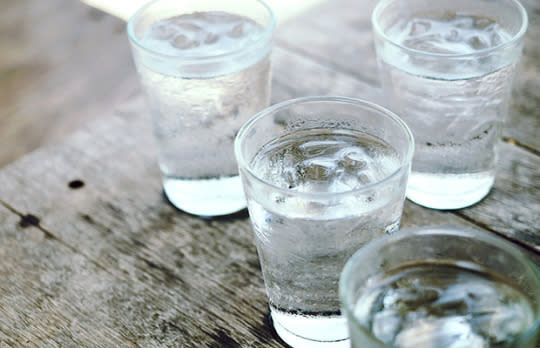
(Photo: Getty Images)
OK, the cake part was nice. Sadly, the day before your exam, you don’t get cake. You don’t get to eat anything, really. The only things on the menu are clear liquids like white grape juice, bouillon, and water. There are actually more translucent beverages and clear liquid food-like substances than you ever thought, and your doctor will send you a list of approved fare. (To make the water go down easier, try one of these sassy water recipes.)
The prep takes hours.
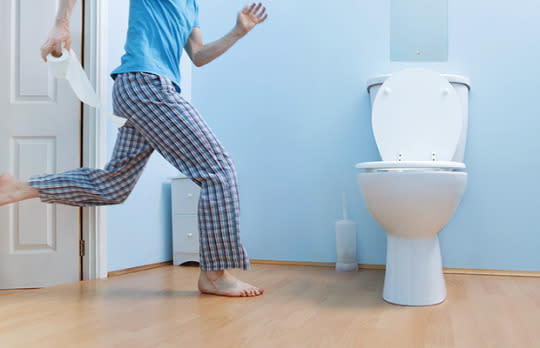
(Photo: Getty Images)
Simply put, bowel prep means taking nuclear-strength laxatives. The goal is to get your colon squeaky clean so your doc can see what’s going on in there. It’s also the reason that many people, like me, put off scheduling the screening or never schedule it at all, says Burke. But once your commit, you need to follow through whole-heartedly: You don’t want to be on the table and be told you have to go through it all over again because your prep wasn’t done properly.
There’s more than one way to cleanse your bowels, but the most commonly-prescribed option requires you to drink vats of a liquid polyethylene glycol (PEG)–based solution. The evening before your exam, you’ll start guzzling about a half-gallon of this sludge. It doesn’t taste great, but some regimens can be mixed with flavor packets or Crystal Light. (Check with your doc.)
Every 10-15 minutes you down 8 oz, and about 45 minutes later you’ll start running to the bathroom to eliminate waste. About 5 or 6 hours before your procedure you get to guzzle another half-gallon (again in 8 oz increments, every 10-15 minutes). (Here are other screenings you might consider having for gut health.)
While none of this is super fun—and if you have an early-morning appointment, it means getting up in the middle of the night to finish the job—it’s far easier than downing an entire gallon in one sitting (which is what doctors used to recommend). This newer “split-dosing” is also more effective, says Burke.
If this sounds truly terrible, speak up. There are alternatives, including pills and smaller-volume solutions. “Your doctor will work with you to find the best prep for you both in terms of your health and preference,” says Burke. “We don’t want prep to be an impediment.”
The test isn’t as embarrassing as you imagine.
There really wasn’t much to blush about. “Everything is designed for patient comfort and safety,” says Burke, noting that the only person looking at your butt for a moment is the doctor when he or she checks for hemorrhoids, fissures, or other abnormalities. After that, the scope goes in and all eyes are focused on the screen looking for polyps. (In other words, no one cares about your butt cheeks.)
The only slightly embarrassing moment came post-procedure, when a rather attractive male nurse asked if I had passed gas. I said nope. He then asked me to move my knees up to my chest. I did. And then I tooted, and tooted again. (During the procedure the doctor inflates the colon with air to help get a better view. So the “passing of air,” isn’t done to embarrass you, says Burke, but rather to help get rid of any excess air in the colon. Leftover air in the colon can cause discomfort.)
The test is pretty quick and doesn’t hurt.
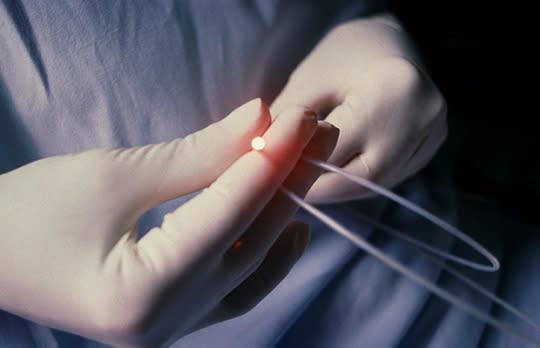
(Photo: Getty Images)
Unless you are a hero and don’t want any anesthesia, you’ll most likely get “conscious sedation"—a drug combo designed to relax you and block any pain. I am not a hero. I got sedation, and I felt nothing. Many people even fall asleep, but I couldn’t stop talking.
The doctor asked me to roll on to my left side and to pull my knees up toward my chest. Then we were off to the races as he inserted the flexible, camera-laden tubing up my butt and gently advanced it through my colon. I heard things like, "excellent prep.” “Things are going well.” And then I remember asking how close we were to being done. My doctor said we were done. The whole thing was over in about 30 minutes.
Best of all, I heard the words that everyone undergoing a colonoscopy hopes to hear: “See you in 10 years.” Translation: nothing suspicious cropped up, and I can wait a decade before my next colonoscopy. (Although you may want to limit some meat consumption to keep your colon healthy.)
As I headed home, I was felt relieved—and ravenous. Many people say they “eat light” after a colonoscopy to avoid cramping and other potential problems. I did not eat light. I tore through a rotisserie chicken like a Viking shield maiden. Then I slept, and dreamed of cake and white bread.
By Joan Raymond
This article ‘The Truth About Getting A Colonoscopy’ originally ran on Prevention.com.
